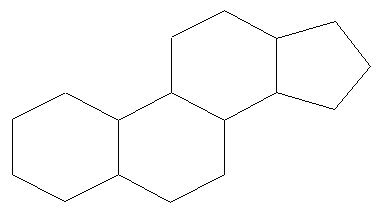
(This session will have several occasions aimed at understanding structures using three-dimensional visualization. A special page lists instructions for enabling 3D structure visualization. You will need to have ChimeTM plug-in on your local computer to perform this important task. If you have any questions please write or call the instructor.)
|
Topics of Special Interest |
| Lecture Slides |
| Handout |
| Structure |
| Numbering |
| Conformation |
| Configuration |
| Classes |
| Nomenclature |
| Practice Problem Set |
| Practice Problem Set - Key |
| Biosynthesis of Cholesterol |
Cyclopentanoperhydrophenanthrene skeleton

Natural steroids have two methyls
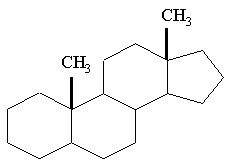
Rings are labeled A, B, C and D.
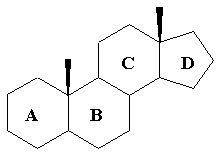
Numbering of each position essentially follows a uniform pattern except for the methyls.
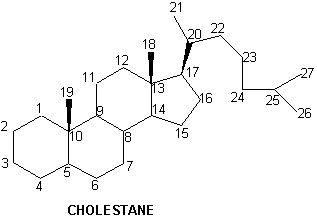
whereas A/B rings have carbon 19, C/D rings have carbon 18. Cholesterol is an important member of the cholestane series of steroids.
There are four rings in a steroid skeleton and hence there are three fusion points. A/B, B/C and C/D rings share two carbons each (fusion). Every fusion center can either be cis- or trans-fused.
For two-ring system, the structures of cis - and trans-fused rings look like this: When the tow hydrogens are oriented opposite to each other with the ring system thought to as forming a plane, the ring fusion is called trans. When there are directed on the same side, it is called cis. To view the structures in three-dimension (using ChimeTM) double-click on the cis and trans hyperlinks (double-click here to view individual chair and boat forms).
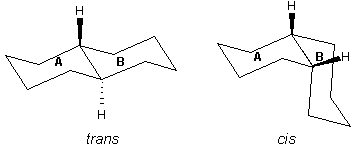
The three fusion centers.
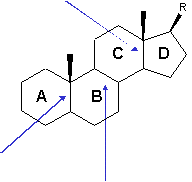
The structures most likely feasible are :
trans-trans-trans (most natural and synthetic steroids have this skeleton, e.g., 5a-dihydrotestosterone)
cis-trans-trans (some natural steroids have this skeleton, e.g., cholic acids)
cis-trans-cis (few natural steroids have this skeleton, e.g. cardiac glycosides (next semester))
The three dimensional structures of natural steroids look like this : Click on individual structures to view the structure in 3D.
The steroid skeleton (all carbons) with its methyls (18 and 19-CH3) oriented as coming towards the viewer (represented as a bold line) is the reference plane in defining whether a particular hydrogen or a substituent is towards the viewer (b) or going away from the viewer (cross-hatched, a). Thus in a two-dimensional representation, with the 18- and 19-CH3 bold, all bold substituents are b and all cross-hatched substituents are a.
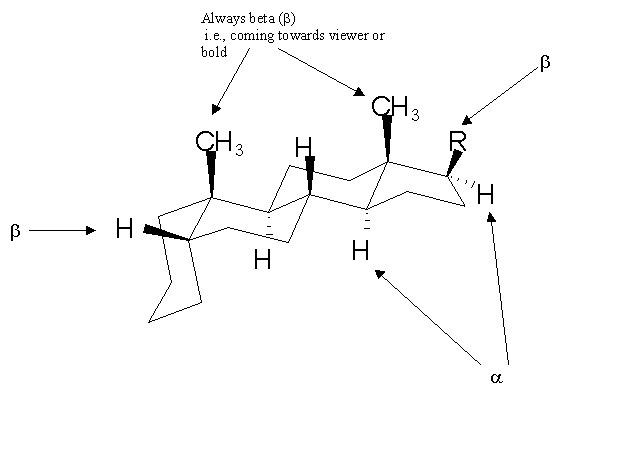
Following are the classes of steroids based on the number of nuclear carbons. Additional carbons that are not nuclear are not to be considered in classifying a steroid.
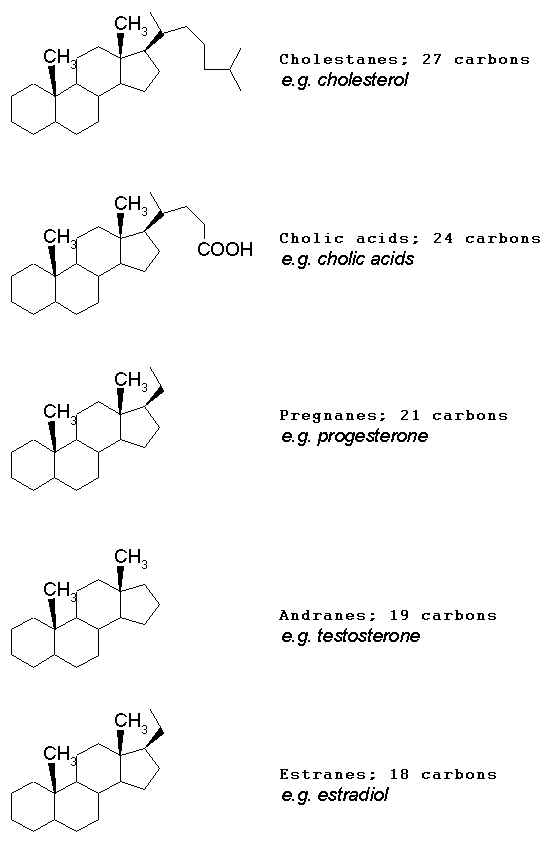
Study the following examples for an understanding on how the steroids are named. Use the above information on numbering, classes and configuration to deduce the name.
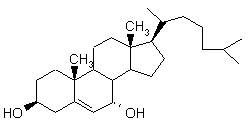
cholest-5-ene-3b,7a-diol
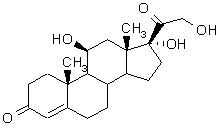
11b,17a,21-trihydroxy-pregn-4-en-3,20-dione
The key step in the biosynthesis of cholesterol is the conversion of 3-hydroxy-3-methyl-glutaryl-Coenzyme A to mevalonate by HMG CoA reductase. This is the rate limiting step in cholesterol biosynthesis.
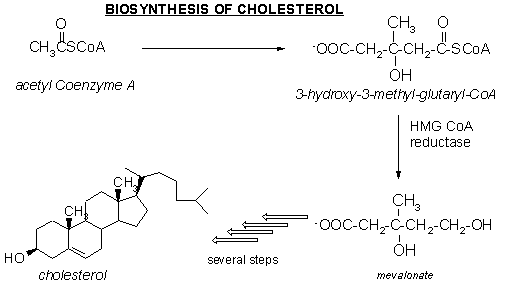
Cholesterol is the raw material for synthesis of all steroid hormones. The conversion occurs in the mitochondria of cells thus requiring the transport of cholesterol from outside cells to inside.
Cholesterol is also metabolized into cholic acid in the liver. Cholic acids are a part of bile acids that are released into the intestines.
[home]
[school of pharmacy] [department
of medicinal chemistry]
[links to sites of interest and download center] [instructions
for downloading and installing software]
©2000 VCU School of
Pharmacy
Revised: October 10, 2000
Questions or Comments : Dr. Umesh R. Desai